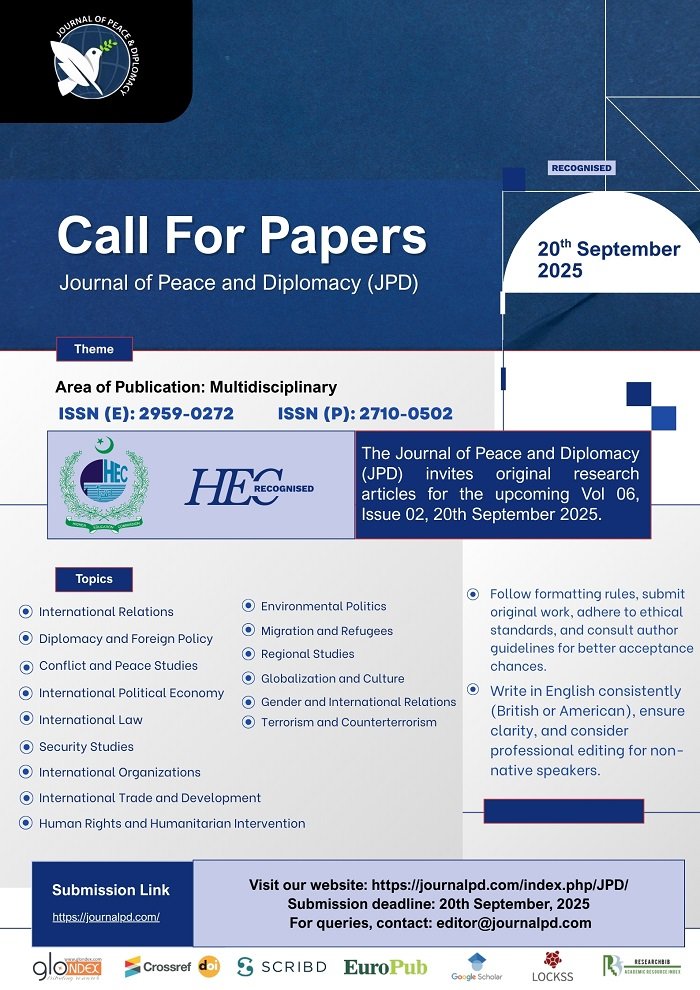India’s new Land Warfare Doctrine: Implications for the South Asian Region
DOI:
https://doi.org/10.59111/JPD.002.01.010Keywords:
India, Pakistan, South Asia, Doctrine, Warfare, Arms race, Integrated Battle Groups, Hybrid warfareAbstract
South Asian security architecture has always faced instability because of the hegemonic ambitions of India and the ever-present rivalry between India and Pakistan. Add Afghanistan’s instability into the mix and the region has become a veritable volcano that can erupt at any time, impacting the entire world. More recently, driven by its ambitious agenda, the Indian military has unveiled a military doctrine by the name of “Land Warfare Doctrine 2018” which is based on a proactive and pre-emptive approach toward any conflict. The doctrine has declared Pakistan to be the primary focus and China to be the secondary focus. It encompasses the geo-strategic environment, future security challenges, environmental realities, and hybrid warfare. With a greater emphasis on the rearrangement of the strike formations into the IBGs or the Integrated Battle Groups, the LWD aims to equip the offensive components for shallow incursions in rapid combat situations. Such an agenda has the potential to thrust the South Asian region into a never-ending arms race, security dilemma, and stability-instability paradox.
Downloads
Published
How to Cite
Issue
Section
License
Copyright (c) 2021 Zubeda Anjum Niazi

This work is licensed under a Creative Commons Attribution 4.0 International License.
Authors retain copyright and grant the journal right of first publication with the work simultaneously licensed under a Creative Commons Attribution (CC-BY) 4.0 License that allows others to share the work with an acknowledgment of the work’s authorship and initial publication in this journal.
















